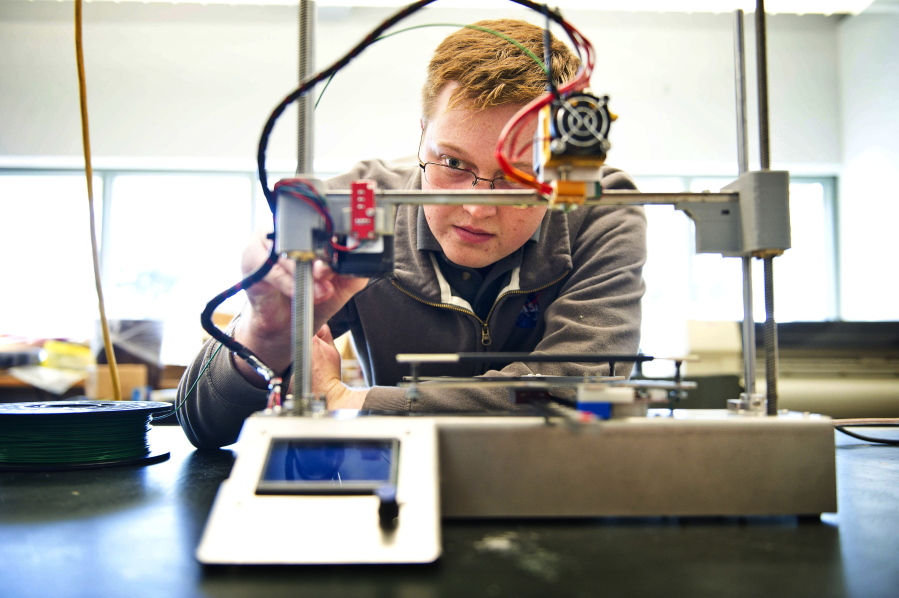WALLA WALLA — When the next rover to roam Mars is launched in 2020 as planned, it will roll along with some lessons learned at Walla Walla University.
Austin Nordman, who graduates from the college in December, has already interned on the rover’s mission development at the NASA Jet Propulsion Laboratory in Pasadena, Calif.
Once Nordman has his bachelor’s degree in engineering in hand, he’ll return to JPL. But first he’ll spend one more quarter in the school’s engineering lab.
It’s where many of the skills he’ll be using at NASA have been nurtured and expanded.
Norman arrived at the university four years ago — toting his own 3-D printer, his teachers recalled — from his home in Dana Point, Calif.
Walla Walla University, Nordman had heard, was small enough to feel personal but big enough to have a solid education opportunity in engineering.
“It’s relatively unknown,” he said. “But they really do put a lot of work into an exemplary university program.”
Nordman, 22, soon grew a reputation as the guy who thrived on challenges. When a sophomore engineering class assignment was on paper only and not meant to become a physical project, he decided to bring it to life.
The student bought a cheap skateboard and attached a motor, battery and controller. The pulleys needed to run the drive belt, however, could not be found in the right shape.
Nordman simply made them on a 3-D printer and crafted his version of a motorized longboard, riding it on the sidewalk outside Kretschmar Hall, home to the university’s computer science and engineering classes.
“That was pretty impressive for a sophomore,” said Don Riley, an engineering professor at the university and one of Nordman’s advisers.
“Oftentimes students don’t have time to do things like that,” he said. “If we can get 10 percent of students who have that skill set, that’s a good day.”
Included on a rather long list of Nordman’s experiments gone right is a 3-D printer that recently caught the attention of Key Technology for its compact size, faster output and reasonable price tag.
Riley said as price and size for the technology shrank, it became feasible for colleges to buy 3-D printer kits for students, at a ratio of one to a small group of users.
When Riley shopped around two years ago, he found basic kits for $250. The machines, however, echoed the price — some of the printer parts were themselves made on a 3-D printer. The metal frame was simple extruded aluminum, and nothing on it was very stable.
“These were a reasonable success, but we felt we could make a kit ourselves at better quality,” Riley said.
Enter Nordman, who said he decided last fall to take a go at making a 3-D printer students could assemble themselves — one “that’s not frustrating to use, down to a price students can afford.”
Giving freshmen a chance to use the commercial grade parts they’ll be exposed to in future careers and putting a printer together using those precision parts is equally valuable to learning how to create on the printer, said Ralph Stirling, WWU School of Engineering project manager.



